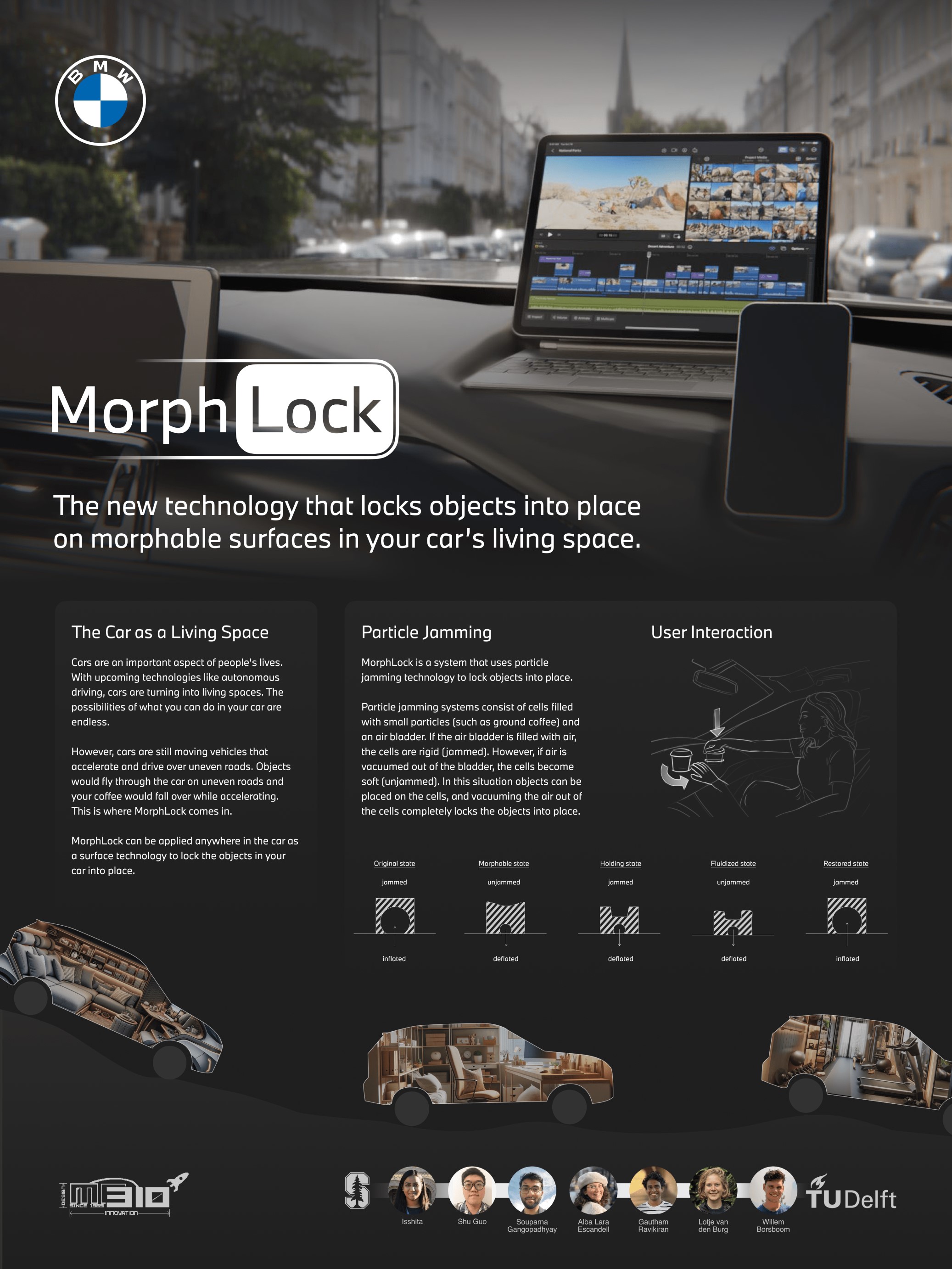TU Delft and Stanford students codesign new self-driving car feature
For the first time, Delft Design students from the TU Delft | Faculty of Industrial Design Engineering participated in Stanford University Faculty of Mechanical Engineering’s ME310 course. During which they collaborated with Stanford students to create MorphLock, a system designed for self-driving cars that uses particle jamming technology to lock objects in place. “The mix of skills and experience helped us to combine all different aspects of concept development.”
As autonomous driving continues to grow in popularity and feasibility, cars are transforming from being basic driving spaces into multi-use living areas. They allow us to do all kinds of new activities while travelling from one place to another. Watching a movie on a laptop, reading a book while sipping a chai latte, or maybe even recording a podcast using an in-car podcast studio – these are all examples of what the future holds.
But where do we safely store all this extra stuff? What if a hot cup of coffee falls over due to a sudden turn or break?
Meet TU Delft Industrial Design Engineering students Alba Lara Escandell, Gautham Ravikiran, Lotje van den Burg and Willem Borsboom - the four master students who participated in Stanford University Faculty of Mechanical Engineering’s ME310 course.
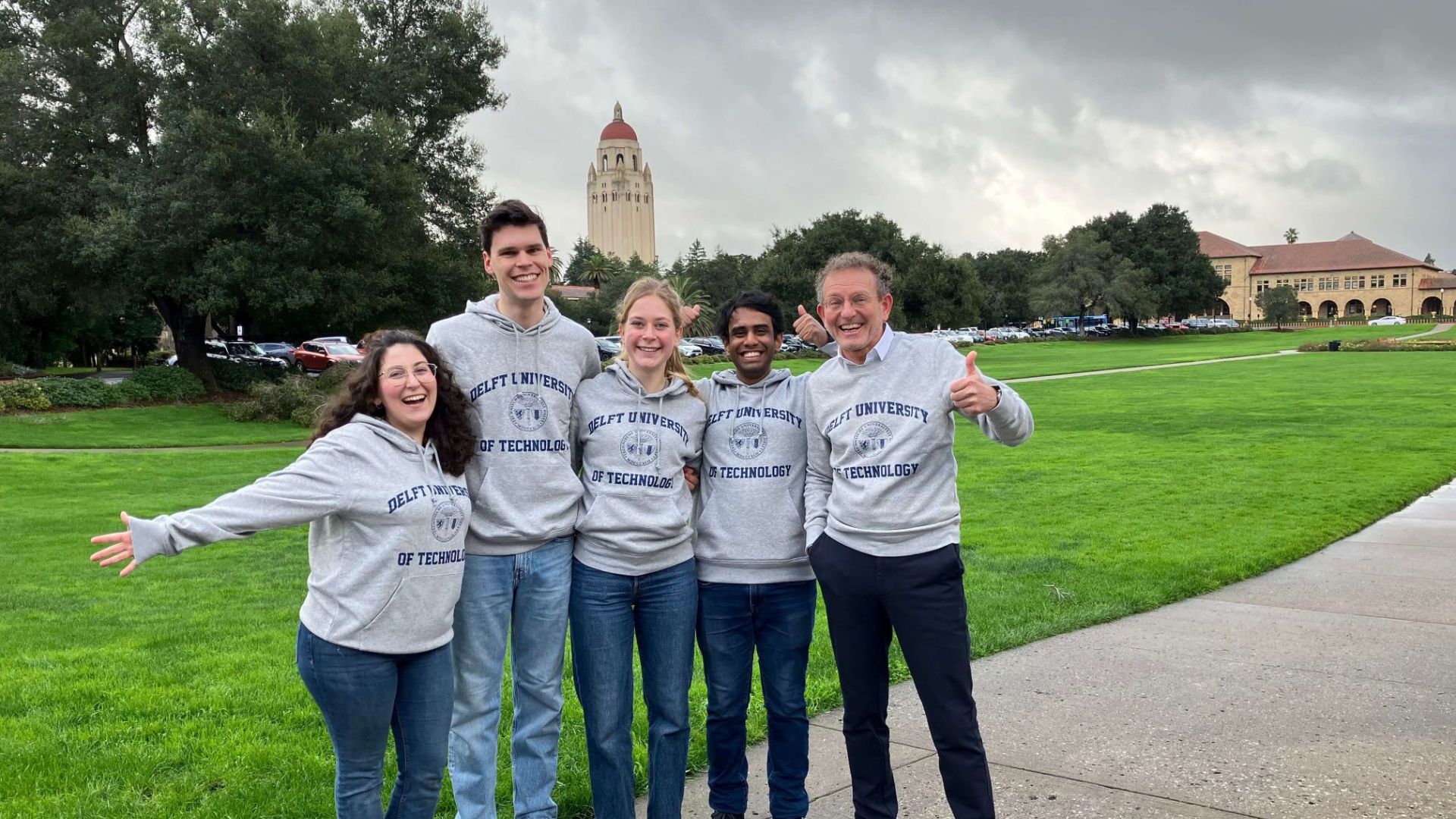
Together with three Stanford Mechanical Engineering students, they designed MorphLock for their sponsor BMW. MorphLock is a system that uses particle jamming technology to lock objects in its place. Particle jamming systems consist of cells filled with small particles of ground coffee, and an air bladder. If the air is vacuumed out of the cell, the cells are jammed. If air is blown into the cell, the particles fluidise and become morphable again. The air bladder has a separate function to create space for morphing and restoring the cell back to its original position. You can place MorphLock anywhere, like in the dashboard of a vehicle for example.
The final prototype was showcased during the final exhibition ‘EXPE 2024’ of the Stanford Mechanical Engineering 310 Masters’ course, attended by participants, sponsors and visitors.
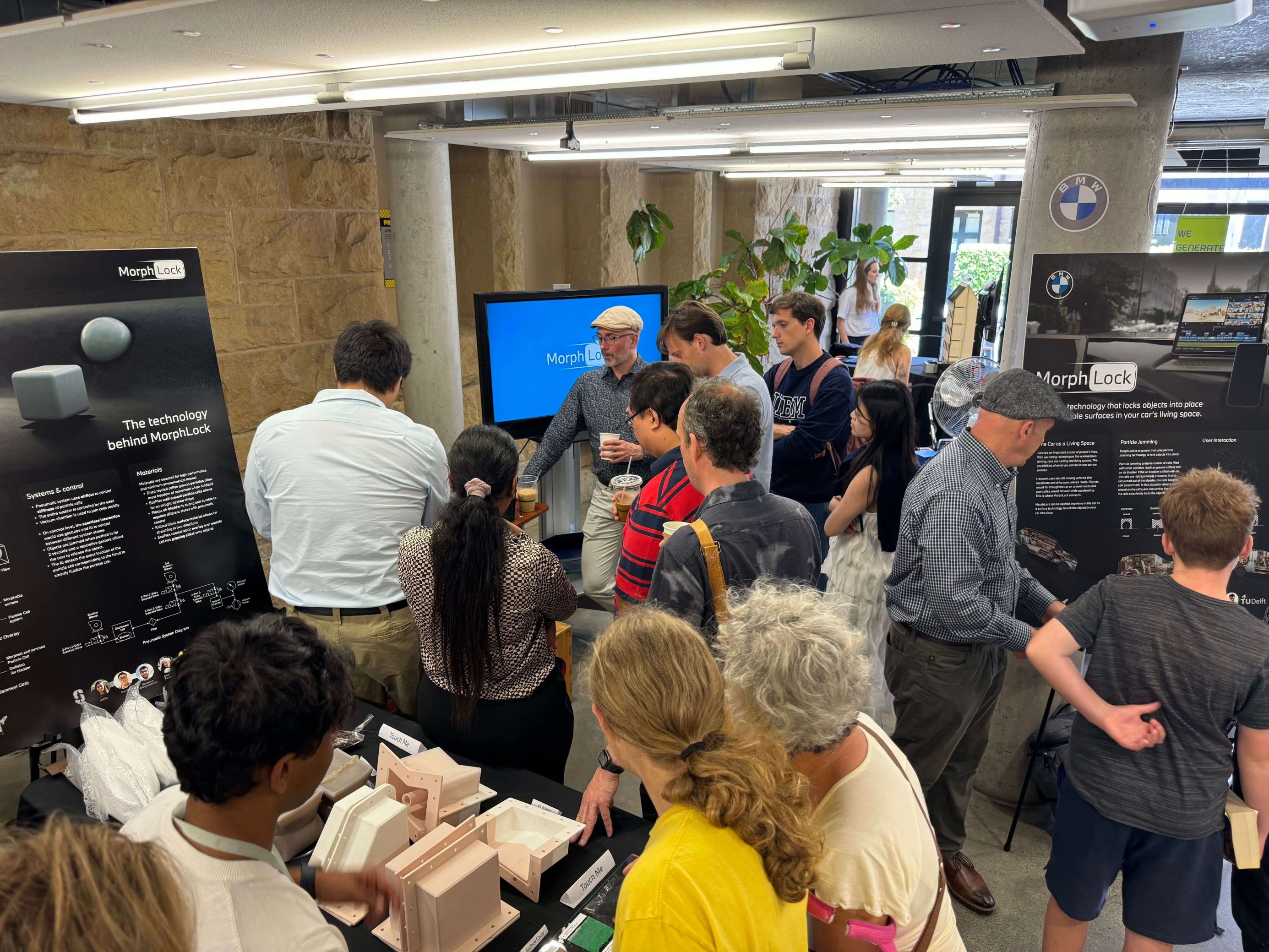
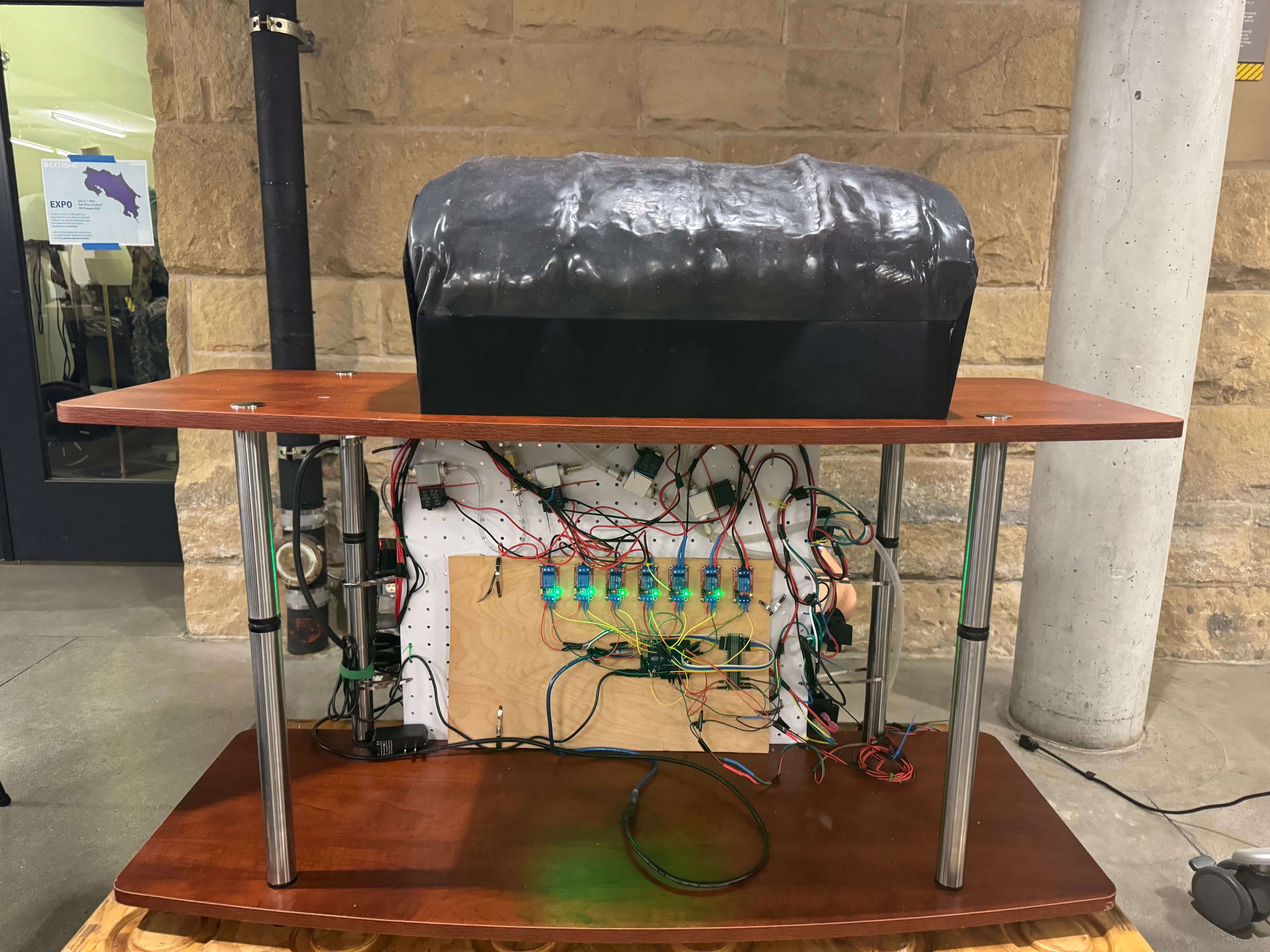
Learnings and Experiences
It was the first time that TU Delft design students participated in the Stanford Mechanical Engineering 310 Masters’ course. Discover what they learned and experienced.
What does the course process look like?
“We explored a lot of different ideas. From a safe no-seatbelt security system, to a transparent A-pillar experience or a morphable seat. The final idea came only a couple of months before the EXPE presentations. The ME310 course stimulated us to do different prototypes and learn from it for the final design. In Delft, we could also prototype with weekly new concepts. We aligned with each other on our work during Zoom meetings, while being in different time zones. As we went to visit them and they came to us, we also experienced that working together in person was much more productive.”


How did you experience presenting your project in front of an international group of students and companies?
“The way that Stanford approached EXPE excited us to put a lot of effort in making a good presentation. We spent a lot of time creating our story and we really wanted to let the audience imagine all possibilities of MorphLock. In the end it was very rewarding to get a lot of compliments on our presentation. At the TU Delft, we sometimes see the presentation as the last thing to prepare, but here we even had an official rehearsal earlier that week, this allowed us to improve our story.”
What did you learn by doing this course?
“We learned that you can become an expert on a topic you initially didn’t know anything about. And that it is super valuable to consult other experts to learn from their experience and knowledge.”
What’s next for MorphLock?
“The BMW team was impressed by the interested reactions in the audience, they will present it to their tech office and explore next steps. It would be very interesting to see – maybe not in this exact form – a feature in future cars that can conveniently store loose objects.”
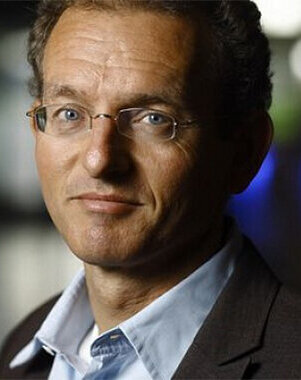
Arjen Jansen
- +31 (0)15 27 81434
- A.J.Jansen@tudelft.nl
-
Room B-3-080
"There's no such thing as bad (sailing)weather, bad (sailing)wear does exist!"

Dave Murray-Rust
- D.S.Murray-Rust@tudelft.nl
- Personal Website
-
32.C-3-250
Present on: Mon-Tue-Wed-Thu-Fri

